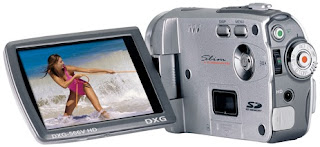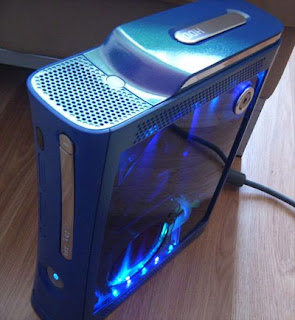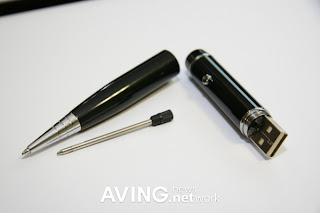New Hitachi drive represents a giant leap forward in notebook storage.
Notebook PC disk storage leaps into the stratosphere today, hitting the half-terabyte mark with Hitachi Global Storage Technologies' announcement of a 500GB 2.5-inch mobile hard drive.
Due out in February 2008, the $400 Travelstar 5K500 drive will dramatically expand the capacity possible in today's notebook PC designs.
Hitachi's announcement makes it the largest capacity mobile 2.5-inch hard drive. Previous high-water capacity marks for 2.5-inch drives included Fujitsu's 300GB drive and Toshiba's 320GB drive. Hitachi's jump to 500GB represents a whopping 36 percent increase in a single bound. (Hitachi also announced a 400GB version for $350.)
Mondo Capacity
In order to achieve this landmark capacity, Hitachi didn't so much advance areal density as it did rethink the drive's design. Hitachi moved to a three platter design, as opposed to the typical two-platter approach for a 2.5-inch hard drive.
According to Hitachi, although the drive itself will occupy a 2.5-inch chassis, the drive mechanism inside the drive enclosure will be a bit thicker than the usual height of a drive. Typically, drives are 9.5mm in thickness; the 500GB drive will be 12.5mm, due to the additional disk platter.
The 5400rpm 500GB drive has 167GB per platter, the highest capacity per platter drive announced. Toshiba's 320GB drive packs in 160GB per platter.
Notably, the power consumption of this drive is practically the same as that of Hitachi's two-platter drive, the 5K250.
"We did not want consumers to sacrifice battery power in exchange for the increased capacity. We spent a lot of time designing the motor, and designing the electronics that control the motor and represent a large portion of the power consumption of a hard disk drive," says Larry Swezey , director of consumer and commercial hard disk drive marketing at Hitachi.
New to this drive: Hitachi's Rotational Vibration Safeguard (RVS) technology. Explains Swezey: "On desktop drives and enterprise drives, when you put several drives together, a drive tends to pick up the rotational vibration produced by the motor of the drive or drives around it. That rotational vibration can cause disk read or write errors if the heads are unable to stay on track due to the vibrations. Drives with RVS add a sensor on the drive itself to detect such rotational vibration; RVS, in turn, controls the movement of the actuator--which moves the drive's heads back and forth--to compensate for the vibration."
The need for such technology has become increasingly apparent to Hitachi as consumer notebooks have gained improved speaker technology. "What we've found is that on consumer notebooks with large speakers, music playback can induce very similar types of vibration [to that caused by rotational vibration] and introduce read or write errors. The use of a rotational vibration sensor can help prevent those errors when the user is playing loud music, for example."
New Product Design
The 500GB 2.5-inch mobile drive provides the grounds for a seismic shift in how notebooks--and other devices that rely on 2.5-inch drives--can be perceived. Current notebooks offer much of the power and capabilities of desktop PCs, but have been constrained by the hard disk drive's size. "I look at this as a new product category, syas Swezey. "We thought this was a good evolution of the mobile drive to meet the changing needs of consumers who are buying notebooks."
One notebook manufacturer, Asus, has already jumped on board. The Taiwanese notebook manufacturer is co-announcing with Hitachi that it will offer the 500GB drive in a striped RAID configuration to provide 1 terabyte of storage. "Asus will be the first in the world with a 1TB notebook," says Swezey.
Another benefit of such a high-capacity, 2.5-inch drive? "We now offer a way for manufacturers to migrate from using 3.5-inch drives to 2.5-inch drives in consumer electronics devices and computers," says Swezey. Desktop manufacturers who want to go to a smaller form factor chassis or DVR manufacturers who want to integrate a drive can do so, "all while staying at the same capacity as with a 3.5-inch drive, but at a lower power draw."
DVR Future
In addition to aiming the 500GB drive squarely at notebook manufacturers, Hitachi is also pushing the drive for digital video recorder applications. The company is offering a second version of the drive, dubbed the Travelstar E5K500, where the "E" stands for Enhanced Availability (EA), a Hitachi approach to optimizing the drive for DVR applications.
Physically, the drive is the same. Hitachi makes some tweaks to the drive's firmware, so the drive can spin 24/7 for DVR and streaming applications, or for use in enterprise servers. The 500GB drive could hold up to 500 hours of video, depending upon the audio and video compression technologies used.
"In the EA drive, you don't want it to shutdown; you want it to be constantly available. We do firmware changes, and we do additional testing to make sure the drive can handle always-available 24/7 operation, versus shutting it down," explains Swezey. "You wouldn't want to use an EA drive in a notebook, because your battery life would be terrible: The drive would never go into power savings mode."
Source: http://www.pcworld.com/article/id,140942-c,harddrives/article.html#


 Forget the fictitious Heroes samurai Takezo Kensei...Mazda named its car of the future after the real Japanese warrior Mori Motonari.
Forget the fictitious Heroes samurai Takezo Kensei...Mazda named its car of the future after the real Japanese warrior Mori Motonari. 

















